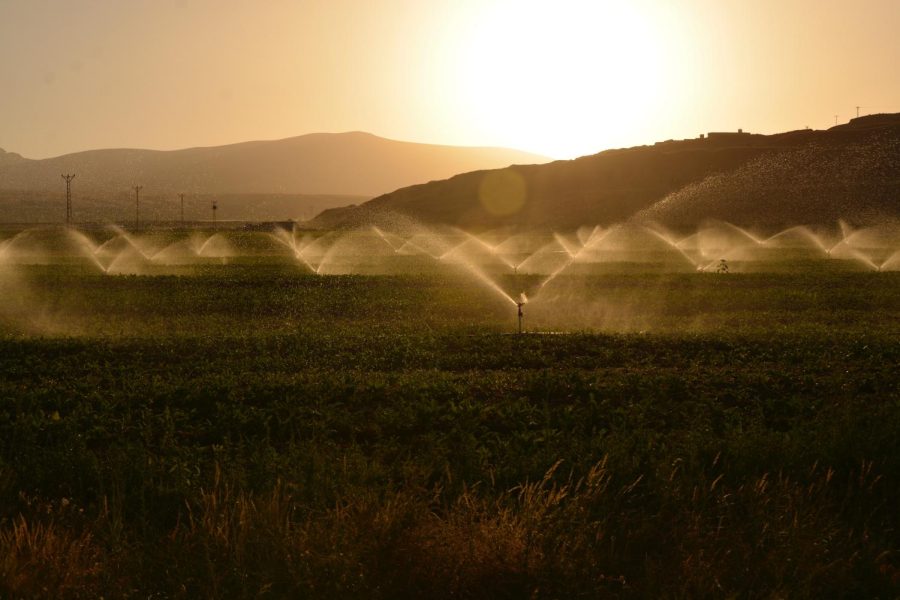Dunn: Utah’s Water Use Has to Change
April 14, 2023
This winter has been one of Salt Lake City’s wettest, and some say Utah is no longer in an “extreme” drought. While this is good, Utah’s water usage still greatly affects our state’s environment. And while we may not be in an “extreme” drought, we are still in a drought.
Utah has been cavalier with water for too long. We must re-examine how we use water to ease the drought and improve our state’s environment.
Personal Water Use
Water is a finite resource, especially when it comes to residential water. Clean and drinkable domestic water supplies residential areas and fills their needs. This includes water for sinks, showers, refrigerators, washing machines and outdoor use. Regarding residential water use, Utah residents use more than any other state in the southwestern United States. As the second most arid state in the U.S., it doesn’t make sense for Utah residents to use more water than anywhere else. Utah also has the cheapest residential water. This encourages residents’ high water use, primarily towards grass lawns. Grass lawns and other outdoor residential water uses use up 5.6% of the Great Salt Lake watershed’s volume.
Utahns should trade grass lawns for outdoor spaces that incorporate Utah’s natural environment. Grass lawns serve no real purpose and only originated because of desires to emulate wealthy Europeans. If we can cut down outdoor residential water use, we could save energy and money spent on cleaning that water. It would also reduce the total amount of water used in Utah and the amount taken from the Great Salt Lake or imported into the state.
Agriculture and Alfalfa
While Utah residents can do their part to lower water usage, the state devotes the majority of its water to agriculture. Utah diverts roughly 85% of the Great Salt Lake’s watershed toward agriculture. This water could go towards refilling the Great Salt Lake but it instead mainly goes towards alfalfa production. Alfalfa is a key crop in Utah’s agriculture economy. It grows well in Utah’s climate, benefits soil and provides income to farmers — who use it as cattle food and export it to China.
However, alfalfa only accounts for 0.2% of the state’s total gross domestic product. The crop also comes at a steep water price. One ton of alfalfa takes approximately 450,000 gallons of water to produce, equating to about how much water two average Utah homes use in one year. Of course, those ranchers shouldn’t have their livelihood stripped from their hands. But if farmers could invest in better canals, ditches and pressurized irrigation systems, they could reduce water usage until we can phase in an alternative to alfalfa.
Environmental Concerns
Water is naturally scarce in our arid environment. The alternative to reducing water usage is for the state to build more reservoirs and pipelines, such as the Bear River Project, to carry water hundreds of miles to populated areas. However, these projects are costly. They also require immense planning and building, which could lead to environmental changes and concerns. This would put stress on bird habitats, which has already become a concern amidst the overuse of the Great Salt Lake’s watershed. The lake’s watershed contains all the water that would enter the lake if people weren’t diverting it for anthropogenic uses. The use of this watershed, along with natural lake evaporation, has led the Great Salt Lake to an all-time low and created environmental concerns tied to the lake. The evaporation has led to massive dust storms in the past five years, and roughly 230 bird species and the brine shrimp industry rely on the lake and are being affected.
Looking Forward
There is still hope. Analysis has shown we can save the Great Salt Lake, negating those environmental concerns. Even so, saving the lake and reducing water use comes with trade-offs. It requires farmers to reevaluate alfalfa production and residents to give up their manicured lawns. Making these trade-offs, though, would not only benefit the environment: we could better manage and provide enough water to everyone during the ongoing drought. We should also have strategies for dealing with future droughts. While droughts in central North America have become less frequent and less intense since the 1950s, our data is insufficient to determine precise, local patterns. Whether we fall back into another extreme drought or not, better water management will improve our lives and the state’s environment.









Alexander Jolley • Apr 14, 2023 at 7:39 pm
Considering the majority of water usage is agricultural, it definetly seems like the place to start to enact change. You mentioned how farmers could invest in better irrigation systems, I wonder if this would be too costly, and it is the reason it isn’t invested in currently. Would Utahns would be willing to increase taxes to help cover the costs, or at least partially. It would really test if Utahns are willing to go in on better resources for water use.
My parents have recently let their lawn die, and are replacing it with artifitial turf; possibly an alternative is allowing tax breaks for doing so? Many would follow suite.